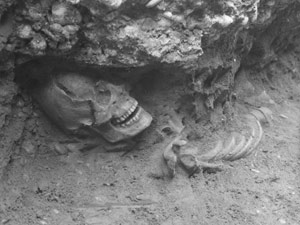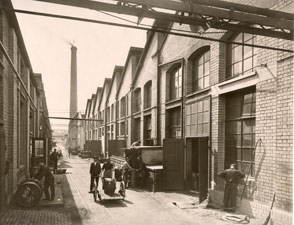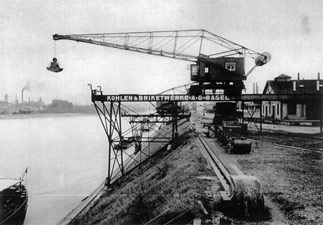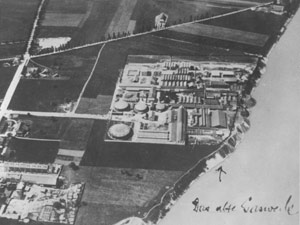

LOCATION |
BASICS
|
| REFERENCES |
| Deutsch |
lifeClipper2 stages the surroundings of Basel’s St. Johann harbour, where early history, industrial history, questions of cultural development and visionary urban planning are inextricably intertwined. The walking tour starts at the Voltamatte and leads along the line of the Nordtangente up to the harbour facilities.
Basel’s gas plant at the Voltaplatz was opened in 1860. The towers of the plant had been significant landmarks of the area until the 1970s. When a boiler was constructed back in 1911, workers of the gas plant hit on relics of a Celtic town from the period 150 to 80 BC. Because of recent construction work for the city highway “Nordtangente” and ongoing construction work for the Campus of Novartis, the Archaeological Department of Basel-Stadt is undertaking extensive excavation work. The analysis of the findings promises fascinating insights into the everyday life of the Celts. Where the representative entrance area of Novartis Campus is being constructed today, 2000 years ago lay the center of the Celtic settlement. With a surface of over 150’000 m2, the settlement reached the dimensions of a town.


Waste from the gas plant served as raw material for the production of paint. This is why the company Sandoz, dealing with chemical products, was founded on the premises next to the gas plant in 1886. One hundred years later, in 1996, Sandoz merged with the company Ciba to form the pharmaceutical company Novartis, a global leader.
Basel’s Rhine harbour St. Johann was built between 1906 and 1911. Today, its reconstruction and the shifting of its activities to other locations are being planned in order to restore the riverbank to the public. At the same time, the conversion of the area enlarges the site of Novartis’ knowledge campus. The “Novartis Campus” is going to offer an inspiring and innovative environment for up to 10’000 employees. The master plan of the campus was designed by Vittorio Lampugnani, Professor at ETH Zurich. Eminent international architects are commissioned to design the individual buildings.


The conversion of the harbour area and the planning of a public way between the St. Johannspark and Hüningen, France, were the subject of an urban planning competition, invited by the Urban Design and Planning Department of Basel-Stadt and by Novartis. In September 2007, the jury voted for the project “Undine” by the architects Hager Landschaftsarchitektur and Durrer Linggi, both of Zurich. The convincing arguments of the project were the design of the riverbank: steplike, it provides a high quality of space for different target groups. The new river walk blurs the border between Switzerland and France and fosters the internationalisation of the city. The compound at the base of the Dreirosenbrücke will be the site of a university department, co-operated by the University of Basel and the ETH Zurich.
lifeClipper2 is able to visualize history and stories. It illustrates the changes that a location undergoes when the transportation of goods is replaced by the transportation of data.